

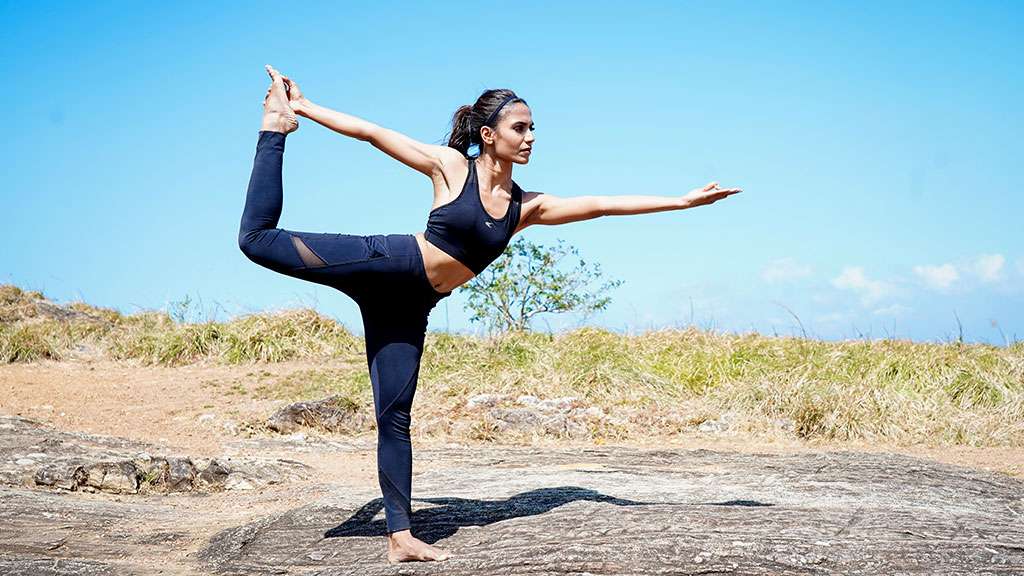
Standing postures are those asanas that begin with the individual standing upright on his/ her feet. Sirshasana alone has the individual standing upside down.
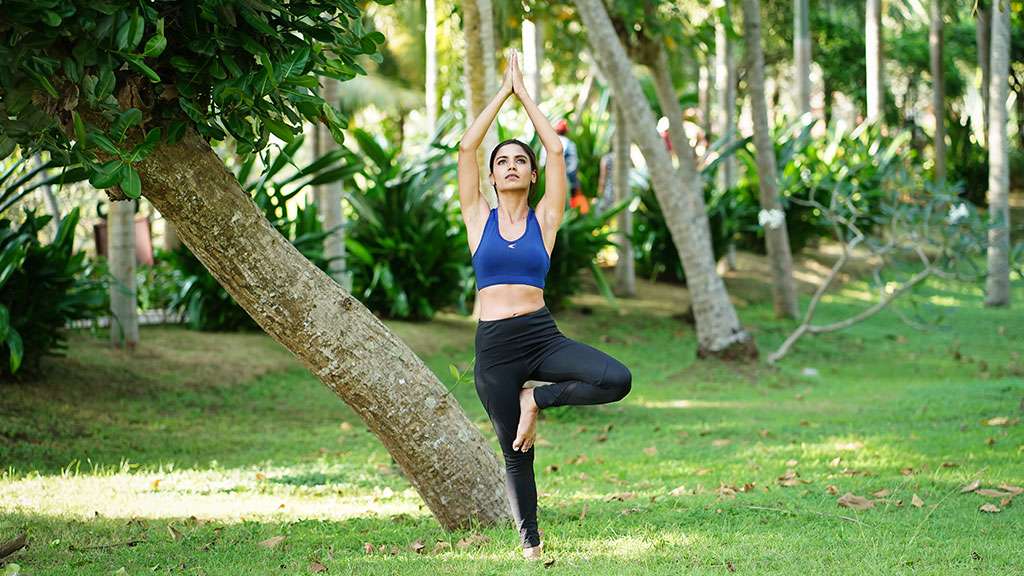
Vrikshasana or the tree pose helps to strengthen the muscles, tendons, and ligaments of the legs. How to do Vrikshasana? Stand straight. Balance firmly on your left leg and lift your right leg. Bend your right leg at the knee. Now, place your right foot against the inside of your left thigh. Make sure the toes of your right foot facing downward. Join your palms in prayer at your chest level. Now, lift your arms over your head till your hands are stretched upward. Hold the position while breathing deeply. Lower your arms to chest level and then separate your palms. Straighten your right leg and stand erect again. Repeat the posture with your right leg.
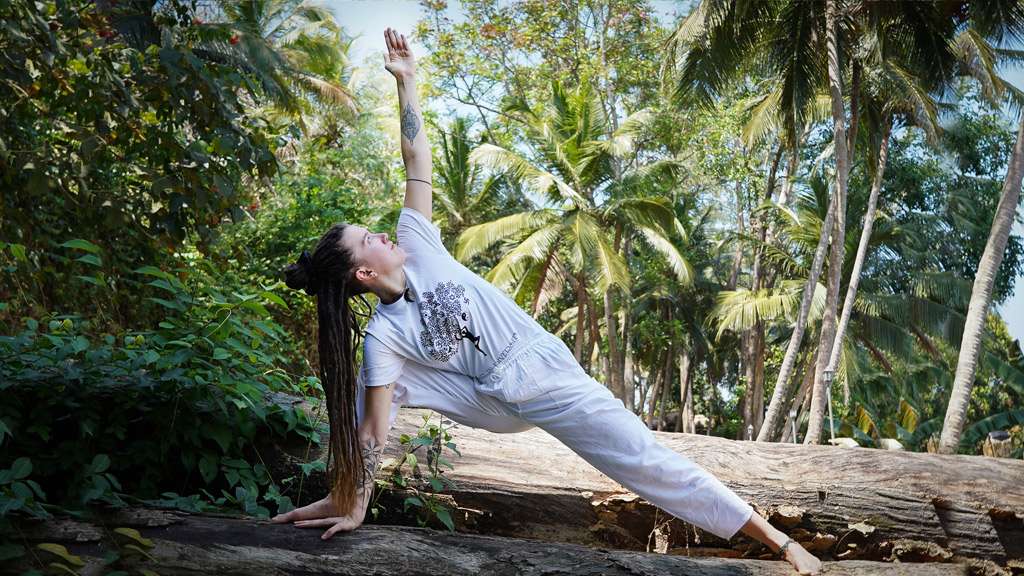
This asana helps to strengthen the muscles in the hip and chest region. It also helps to reduce lower back pain. Trikonasana is generally considered as a good warm-up exercise to improve general health. How to do Trikonasana? Stand straight with your legs apart. The distance between your legs should be a little more than the span of your shoulders. Inhale. Raise your right hand straight above your head. The right arm should be parallel to the right ear. Exhale. Bend your torso at the waist, to your left side. Simultaneously, slide your left arm down along your left leg till your fingers are at your ankle. At this point, your right arm must be horizontal as your head is tilted left. Hold the pose with your knees and elbows straight. Hold the position for 30 seconds. Inhale. Straighten yourself and stand erect. Repeat the posture on the other side.
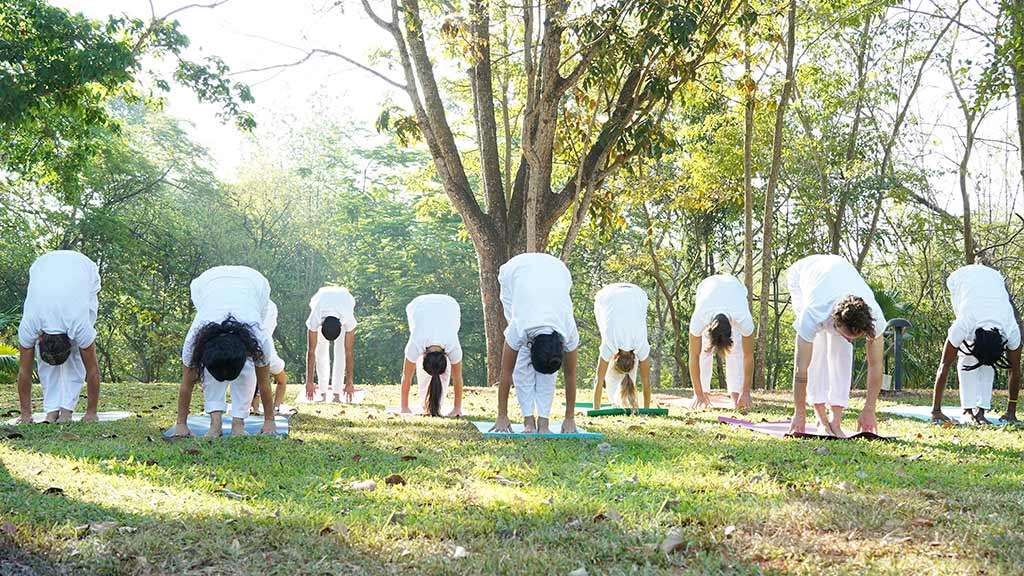
Padahasthasana is important for your health as it invigorates the nervous system. The stretching of the muscles in the back of the leg and lower back (lumbar region) relives stiffness and improves blood supply. Regular practice of this asana stimulates digestion enhancing the functions of various digestive organs thereby getting things moving effectively inside the digestive tract. This asana is best to eliminate excess belly fat. How to do Padahastasana? Stand erect with your feet kept close together. Inhale deeply and slowly. Stretch both your arms straight above your head. Keep your body erect and feel it stretch upwards. Exhale. Bend forward and down with your arms outstretched. Keep your knees straight and your head close to your knees. Grip the back of your lower legs (your calves) with your hands. Breathe evenly. Maintain the position for up to a minute.
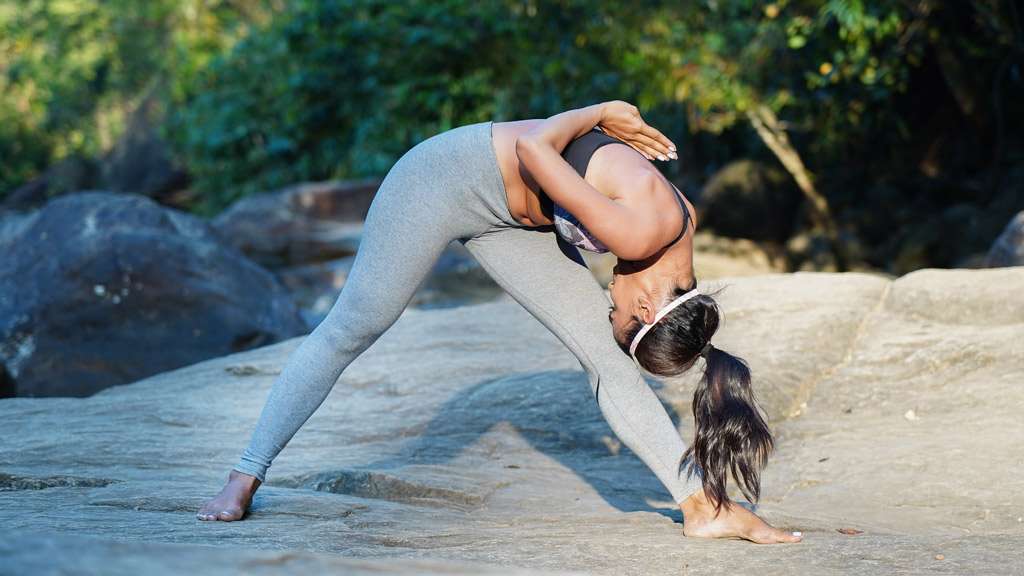
Parsvottanasana or The Side Stretch helps to relax the brain and it also strengthens the shoulders, spine, wrists, hamstrings, and hips. Stand erect. Inhale deeply. Draw your shoulder backward along with your elbows. Join your palms. Exhale. Turn your joined palms upward, as if in prayer. Inhale. Jump and land with your feet apart. Exhale. Inhale. Twist your trunk to the right at your waist. Turn your right foot to the right. Exhale. Bend your trunk forward and downward. Let your head meet your knee. Keep your knee straight and leg tight. Breathe evenly. Maintain the posture for 20 seconds.
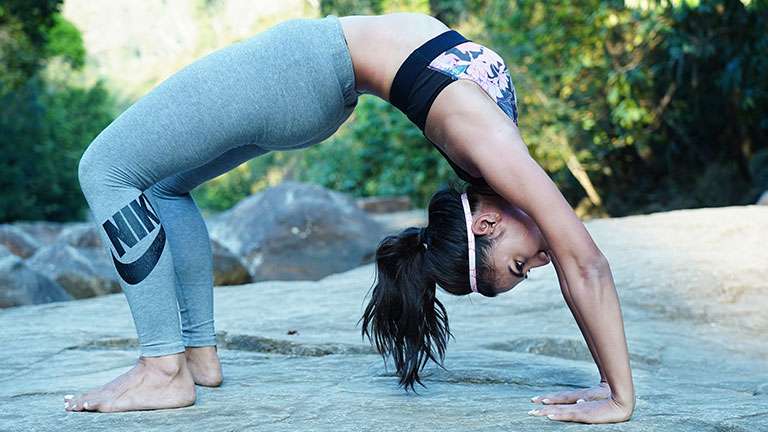
Regular practice of this asana is food for infertility, asthma, and osteoporosis. Chakrasana also strengthens liver, pancreas, and kidneys and is best yogasana to stimulate the Thyroid Glands. How to do Chakrasana? Stand straight with your feet slightly apart. Place your palms against your lower back and push your pelvic region slightly forward. Exhale. Curve your trunk backwards. Support the weight of your body with your thighs. Slowly stretch your arms over your head as you continue to bend backwards. Bend till your palms drop to the floor behind you. Immediately straighten your palms to support your body and to avoid a fall. Your body should form an arch. Breathe evenly. Maintain your position for a few seconds.

Supta Vajrasana or the reclined diamond pose, is a good exercise for the health of women who suffer stomach pain during menstruation. Blood circulation to the internal organs like kidney, liver and pancreas is properly maintained. How to do Supta Vajrasana? Start in the Vajrasana posture. Bend your torso backwards from the waist. Using the support of your arms, bend till you can place your head on the ground. Bring your palms together if you wish to rest your head on them. Ensure that only the upper part of your spine can touch the floor. Close your eyes and breathe evenly. At the outset, maintain the posture for 30 seconds. As you continue to practise, increase the duration to 3 minutes.